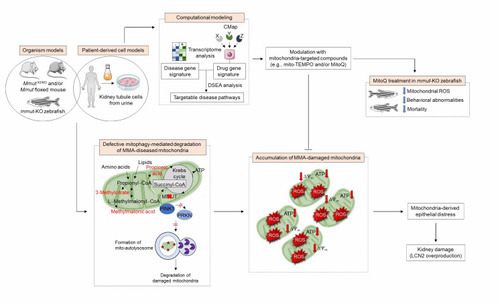- Title
-
Mitochondria, mitophagy, and metabolic disease: towards assembling the puzzle
- Authors
- Chen, Z., Berquez, M., Luciani, A.
- Source
- Full text @ Cell Stress
|
In MMA-affected kidney cells and zebrafish, deficiency of the enzyme MMUT and the resulting accumulation of toxic organic acids trigger mitochondrial alterations that are characterized by a collapse of the mitochondrial membrane potential (Δψm), abnormal bioenergetics profiling, and increased generation of mitochondrial ROS and oxidative stress. Faulty execution of PINK1-PRKN-mediated mitophagy induced by MMUT deficiency impedes the delivery of damaged mitochondria and their dismantling by autophagy-lysosome degradation systems. This leads to the accumulation of dysfunctional, ROS-overproducing mitochondria that ultimately trigger epithelial distress (as evidenced by LCN2 overproduction) in patient-derived cells and disease-relevant phenotypes (as testified by liver/kidney mitochondriopathy, behavioral abnormalities and an excess of mortality) in |

